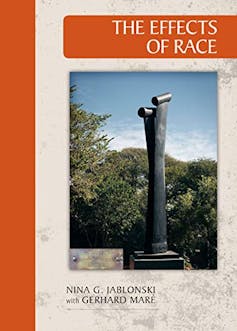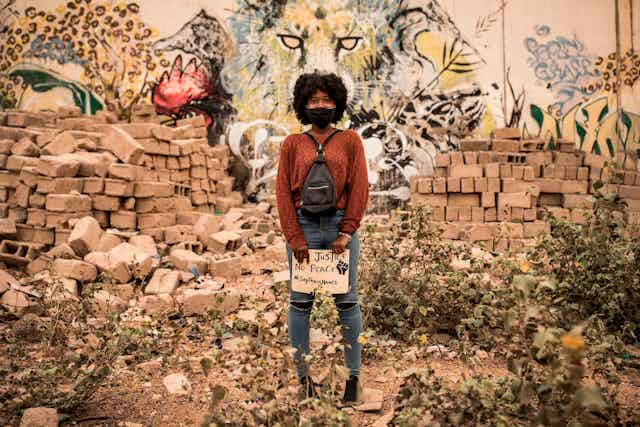What does it mean to be human today? It is an excellent starting point for thinking about human inequality.
To be human, in an elementary sense, means three things.
First, you are a sexed living organism, capable of feeling pain and pleasure and of reproduction, with a delimited lifespan of development and decay, subject to vicissitudes of health and illness.
Secondly, you are a person, with a self and a reflexive capacity, flourishing or suffering in social environments.
Thirdly, you are a creative, goal-oriented actor, collective as well as individual, endowed with resources of varying size and kind.
The possibilities of flourishing as a human are shaped by processes of (in)equality. Differences are either given – by God or by Nature – or chosen as lifestyles.
Unlike difference, inequality is a historical social construction.
The three-dimensionality of humanity gives us three kinds of human inequality. These are vital, existential and resource.
The three kinds of human inequality
Vital inequality refers to socially determined distributions of health and ill health and of your lifespan. It can be measured in life expectancy and in health expectancy or your years without serious illness. Where demographic life tables are missing, infant and child mortality are more accessible indicators.
Existential inequality sums up the unequal social treatment of persons. On one end of the spectrum resides denial of recognition, autonomy, existential security, dignity and respect. These can be achieved through acts of neglect, bullying, degradation and humiliation. The ultimate result is a denial of their humanness. At the opposite end are selective attention, freedom, emotional security, encouragement, respect and admiration.
Existential inequality is structured and processed by categories and lenses of othering – such as sex, race, ethnicity, caste or religion. It is arguably the most hurtful and wounding of inequalities. It has given rise to a range of egalitarian movements – feminist, anti-racist, nationalist, anti-caste, anti-bigotry. It has been an important driver of workers’ movements, in which the demand for recognition of workers’ human dignity has been central.
So far, however, existential inequality has received little systematic analysis and study.
It is hardly quantifiable and is difficult to compare. Legal practices and public norms, recurrent demographic and health surveys, opinion surveys, anthropological studies, autobiographies and media reporting provide qualitative evidence.
Resource inequality expresses the unequal allocation of resources to act among human actors. It is most frequently gauged through distributions of income and wealth and of so-called human capital. Less studied in this context, although highly relevant, are distributions of power and rights.
The three dimensions of inequality are interconnected and interact or “intersect”, but each has its own dynamic and trajectory, globally and nationally.
What othering does
Othering means seeing and treating a set of people as being of a different kind than you and your type of people, as strange, peculiar and (usually) inferior. Viewing “race” as a category of existential othering means highlighting its character as a socio-cultural construction that is subject to change. This occurs alongside many other constructs such as gender, ethnicity, caste and religion.
In early 20th century Europe, “race” was often synonymous with ethnicity. For example, “the British race” or references to geo-ethnic groups, such as the “Alpine” or “Mediterranean race”. In continental Europe today, “race” is hardly used at all.
This does not mean that discriminatory and hateful othering has disappeared. It means it is now operating with other labels like Arabs, Muslims, immigrants, Africans…
The existential perspective leads us to human self-formation and its connection with capability formation. The very meaning of racism and of patriarchy is to deny self-esteem and self-confidence – indeed any self at all – especially to black (or any other racial target) and girl children. It installs shame, self-contempt and fear instead.
Read more: Why does racism prevail? Leading scholars apply their minds
Such punitive processes are, of course, not always successful. But they often inflict lasting wounds. Prejudice and stigma act as stressors on the victims and have both somatic (bodily) and psychological effects. They also, by themselves, cause under-performance by the targets. Psychology experiments have shown that when marginalised groups are told they are inferior, they perform badly on given tasks. Conversely, when told they are expected to be superior, their performance improves.
Two sets of burdens
Children of poor, oppressed and/or discriminated populations are loaded with two sets of heavy burdens. These cause many or most of them to under perform. One is the burden of social determinants, of ill-health and stunted development, which goes along with not enough emotional security and positive social stimulation. In other words, vital inequality, which bears upon capability formation. The other operates through the negative impacts on self-development of esteem, confidence and ambition by existential processes of stigmatisation, humiliation and fear.
Both these childhood experiences tend to have lifelong effects, beginning life-curves of cumulated disadvantages. Furthermore, they provide reinforcing and reproducing confirmatory evidence of inferiority of the race, gender or caste.
And when some individuals of the put-down race, gender or caste manage to break through their discrimination and oppression, this is often used as further evidence of the inferiority of the category in question. The losers are regarded as deficient persons, of low-life existence. To hardcore racists, this is inherent and inherited. But after the liberation of Auschwitz, existential inequality is more effective when leaving its genetic background unnamed.
Why racism prevails
Unequal personal selves are produced by existential inequality. And they are fortified by early cognitive and social capability formation. This can explain much of the enduring longevity of racism, patriarchy, caste and religious disadvantage, even after their formative institutions are abolished.
Such institutions of inferiority-cum-superiority have no internal dialectic of change. Change comes exogenously, from the outside, from contingent cracks of the pillars sustaining the institutions.
Sub-institutional change, of everyday existential inequality, will require broader social and cultural transformations. It will require equalising processes of self and capability formation. The current hardening of nationalism in power – the existing nation-states nationalism – and fundamentalist religious revival tend rather in the opposite direction.

This article is part of a series of six. Other authors include Nina Jablonski, Barney Pityana, George Chaplin, Kira Erwin, Kathryn Pillay and Njabulo Ndebele.
The three edited volumes of essays published by African Sun Media in 2018 (The Effects of Race, edited by Nina G. Jablonski and Gerhard Maré), 2019 (Race in Education, edited by Gerhard Maré), and 2020 (Persistence of Race, edited by Nina G. Jablonski) contain the complete representation of the project’s scholarship.

